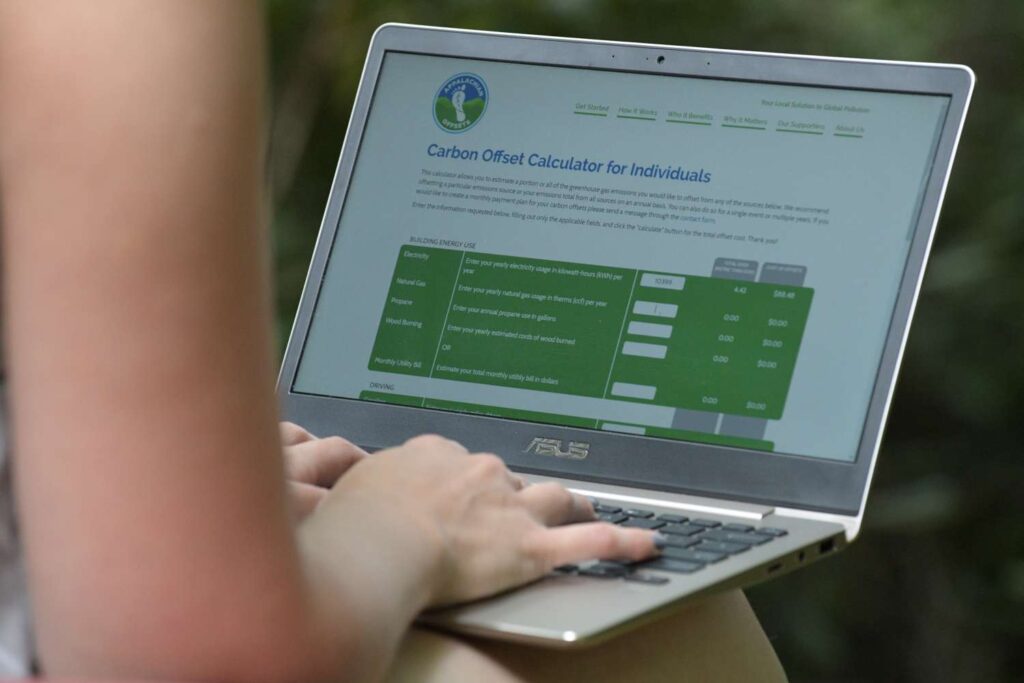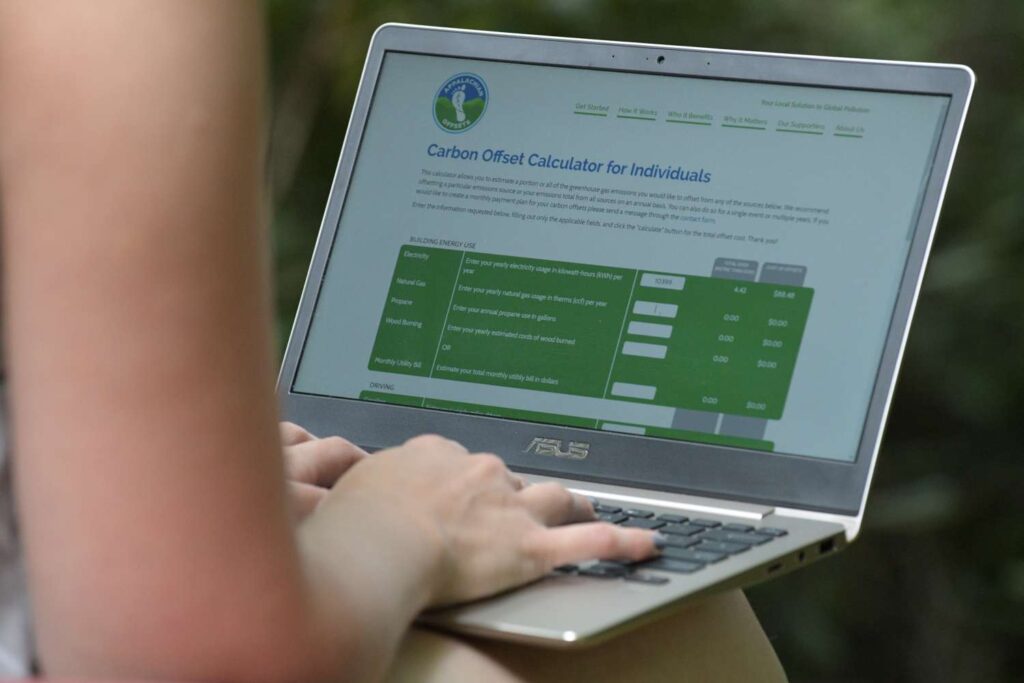The term “carbon offset” is unfortunate. It is so literal but still somewhat figurative.
What exactly is a carbon offset? It begins by calculating my personal carbon footprint. How much carbon is produced every year in support of my lifestyle — carbon from electricity, carbon from miles driven, carbon from my diet? The amount of carbon is measured in metric tons and the average American produces 20 metric tons of carbon per year.
A carbon offsetting program sets a price per metric ton, and a person offsets their carbon footprint by purchasing as many tons as their lifestyle produces. The funds are then invested in projects, technology, and research to remove carbon from the atmosphere. Carbon is removed by reducing community power usage, generating electricity from a renewable source, or funding plantings that sequester carbon.

My experience
In the past, I have been skeptical of carbon offsets.
I was clueless as to what purpose they serve, and suspicious of people choosing to purchase an abstract idea of carbon reduction over making lifestyle changes. I did not understand how carbon offsetting could be anything less than a salve for consumerist guilt.
Flash forward to present day, and I am a monthly carbon offset subscriber through the local Appalachian Offsets program administered by Green Built Alliance.
I have learned that carbon offsetting is an investment in sustainable projects. I made lifestyle changes, and now I make an even bigger impact by contributing to carbon reduction in my community.
I do have some consumerist guilt, but carbon offsets are not my comfort. Carbon offsets allow me to be part of a solution that is larger than my individual choices or purchases. It is a means to combine my investment with other environmentally-minded citizens to complete a project that will remove more tons of carbon from the atmosphere each year than any single choice I make in my lifestyle.
Furthermore, those projects will remove carbon for years to come. Carbon offsets have a more lasting impact.
Our choices
Lifestyle changes can reduce my carbon footprint.
If I ate meat with every meal but switched to a completely vegetarian diet, I would reduce my carbon footprint from 3 tons to 1.5 tons per year. If I purchased a carbon offset in the amount of that difference, those funds would be used to install solar panels, LED light bulbs, or other sustainable technologies that would remove 1.5 tons of carbon from the atmosphere every year for many years.
The carbon offset builds on my individual efforts.
There are some lifestyle choices I have control over and some I cannot change. For instance, I live and work in cities focused on car travel and ownership. I may drive fewer miles, carpool, or take public transit, but I am still producing carbon. I will never reduce my usage to zero tons of car bon unless the entire network of transportation is switched from fossil fuels.
I don’t have the power to change systems on that scale as an individual, but I can combine my investment with a group of like-minded people to fund a project that will start that process. The carbon offset accomplishes a reduction I cannot meet as an individual.
Simple lifestyle changes can have a big impact if everyone makes the same choices. However, it’s not reasonable to expect everyone to adopt the same lifestyle choices I make for myself. Besides, I might drastically reduce my carbon footprint in one area of my life but I can’t seem to make the same reduction in other areas.
The carbon offset balances those areas where I’m doing well with the areas where I could stand to improve.
Our efforts, multiplied
I have come to love the idea of carbon offsets. I cannot imagine a better or easier way to make a lasting impact in my community.
I love knowing that my carbon reduction efforts are multiplied. I feel good about combining my investment with others to make reductions I could not achieve on my own. I am reassured that even if I can’t live the perfect zero-carbon lifestyle, I’m still helping move my community towards a cleaner, more sustainable future.
And I achieve all that with a small monthly payment. I can offset my entire carbon footprint or just my flights, miles driven, omnivore diet, etc. I can set a small recurring donation that will make a big impact when it’s combined with other carbon-offset funds. I am always striving to reduce my carbon footprint through my personal choices, but no matter how successful my individual efforts are, I am funding long-lasting, impactful projects within my community that will hopefully bring about the sustainable future I am envisioning.
Carbon offsetting is convenient, it is effective, and it is one of the small ways I make big changes for a more sustainable future.
Chrissy Burton is an architect and LEED AP BD+C practicing in Asheville, NC. She is the current chair of the Board of Directors for Green Built Alliance.
You can also view this article as it was originally published on pages 60-61 in the 2019-2020 edition of the directory.


